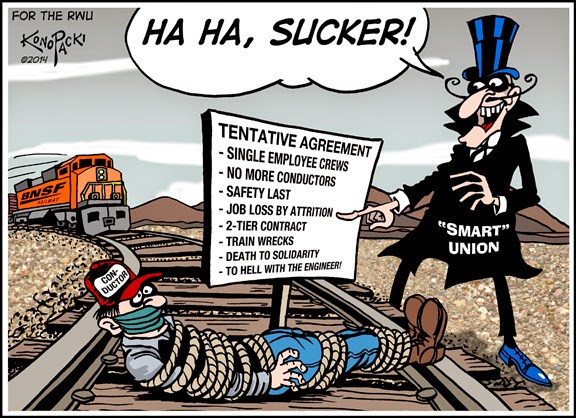The Fine Print I:
Disclaimer: The views expressed on this site are not the official position of the IWW (or even the IWW’s EUC) unless otherwise indicated and do not necessarily represent the views of anyone but the author’s, nor should it be assumed that any of these authors automatically support the IWW or endorse any of its positions.
Further: the inclusion of a link on our site (other than the link to the main IWW site) does not imply endorsement by or an alliance with the IWW. These sites have been chosen by our members due to their perceived relevance to the IWW EUC and are included here for informational purposes only. If you have any suggestions or comments on any of the links included (or not included) above, please contact us.
The Fine Print II:
Fair Use Notice: The material on this site is provided for educational and informational purposes. It may contain copyrighted material the use of which has not always been specifically authorized by the copyright owner. It is being made available in an effort to advance the understanding of scientific, environmental, economic, social justice and human rights issues etc.
It is believed that this constitutes a 'fair use' of any such copyrighted material as provided for in section 107 of the US Copyright Law. In accordance with Title 17 U.S.C. Section 107, the material on this site is distributed without profit to those who have an interest in using the included information for research and educational purposes. If you wish to use copyrighted material from this site for purposes of your own that go beyond 'fair use', you must obtain permission from the copyright owner. The information on this site does not constitute legal or technical advice.





 There is a clear case to be made for the connection between ecology and anarchism.1 Many philosophers, academics, and radicals have elaborated this over the past two centuries2. But reviewing the history of this theoretical relationship is not the goal here. The movement surrounding anarchism in the past 200 years has certainly included its fair share of theory, yet what has rooted anarchist ideas so deeply in human society is the prioritization of action. It is this action-based relationship between the ecological movement and anarchism that we explore.
There is a clear case to be made for the connection between ecology and anarchism.1 Many philosophers, academics, and radicals have elaborated this over the past two centuries2. But reviewing the history of this theoretical relationship is not the goal here. The movement surrounding anarchism in the past 200 years has certainly included its fair share of theory, yet what has rooted anarchist ideas so deeply in human society is the prioritization of action. It is this action-based relationship between the ecological movement and anarchism that we explore. The transport of petroleum via rail is now a well-known and unwelcome sight in many other U.S. communities. Its long distance rail transport has resulted in five major train fires and explosions in the last 16 months alone.
The transport of petroleum via rail is now a well-known and unwelcome sight in many other U.S. communities. Its long distance rail transport has resulted in five major train fires and explosions in the last 16 months alone. Well, they got Frank Little. No wireless message ever sped faster than these five words thru the .world of labor. For on the first morning of this month an agitator was hung in Butte, Montana.
Well, they got Frank Little. No wireless message ever sped faster than these five words thru the .world of labor. For on the first morning of this month an agitator was hung in Butte, Montana. Communities across the globe are working together to keep coal in the ground everywhere and promote a just transition to a renewable energy future. In the Pacific Northwest,
Communities across the globe are working together to keep coal in the ground everywhere and promote a just transition to a renewable energy future. In the Pacific Northwest,  More than 120 people attended the Future of Railroads Conference (RailCon15) in Richmond, California, March 14th, organized by Railroad Workers United, with support from local environmental groups and others.
More than 120 people attended the Future of Railroads Conference (RailCon15) in Richmond, California, March 14th, organized by Railroad Workers United, with support from local environmental groups and others. On the eve of the
On the eve of the